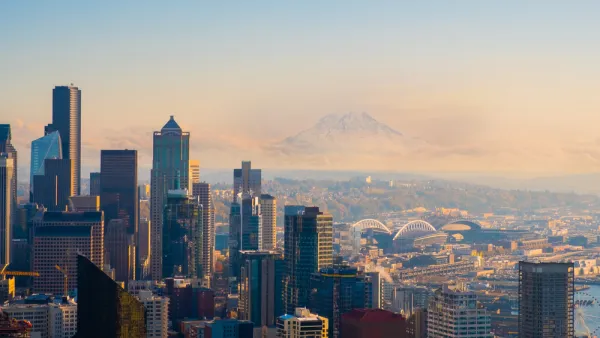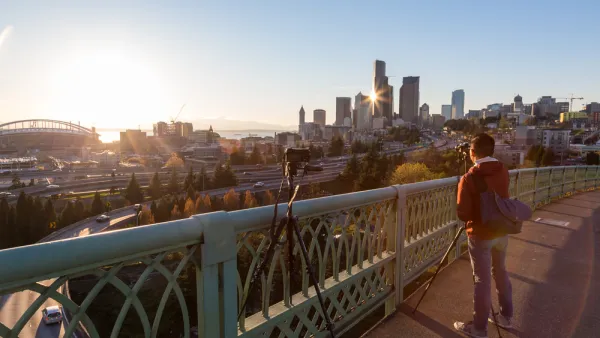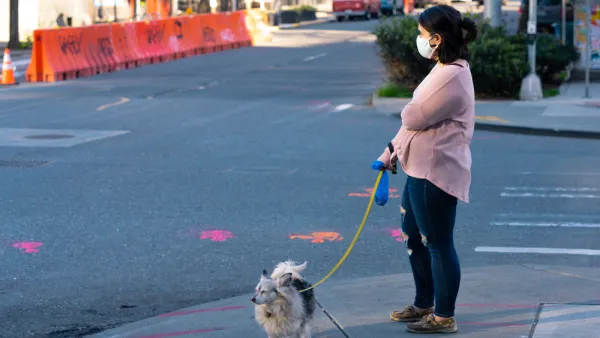Ryan Packer argues that Seattle could do more to improve its retail districts by updating its building codes to encourage dense, welcoming shopping districts.
Brick and mortar retailer stores flourish in areas where other similar stores are plentiful. Empty buildings, long stretches of brick or concrete walls, and even large retailers with one entrance can create streets that feel dead. Flourishing retail districts don't just benefit shop owners, they give cities their vibrancy, encourage walking and make for interesting places to visit.
In a piece for The Urbanist, Ryan Packer suggests three strategies to encourage these lively neighborhoods:
- Giving extra floor area in exchange for locating the large-footprint retail uses away from street frontages;
- Encouraging smaller, ground floor retail units
- Requiring accessibility and higher activity uses at primary street corners.
Even featureless blocks don't have to feel abandoned. "Some practical solutions to improving these spaces include things like ground floor transparency (few blank walls), adding faux building entrances, painting murals on walls, and reducing maximum building widths," Packer adds.
FULL STORY: Encouraging Better Seattle Retail Districts

Analysis: Cybertruck Fatality Rate Far Exceeds That of Ford Pinto
The Tesla Cybertruck was recalled seven times last year.

National Parks Layoffs Will Cause Communities to Lose Billions
Thousands of essential park workers were laid off this week, just before the busy spring break season.

Retro-silient?: America’s First “Eco-burb,” The Woodlands Turns 50
A master-planned community north of Houston offers lessons on green infrastructure and resilient design, but falls short of its founder’s lofty affordability and walkability goals.

Test News Post 1
This is a summary

Analysis: Cybertruck Fatality Rate Far Exceeds That of Ford Pinto
The Tesla Cybertruck was recalled seven times last year.

Test News Headline 46
Test for the image on the front page.
Urban Design for Planners 1: Software Tools
This six-course series explores essential urban design concepts using open source software and equips planners with the tools they need to participate fully in the urban design process.
Planning for Universal Design
Learn the tools for implementing Universal Design in planning regulations.
EMC Planning Group, Inc.
Planetizen
Planetizen
Mpact (formerly Rail~Volution)
Great Falls Development Authority, Inc.
HUDs Office of Policy Development and Research
NYU Wagner Graduate School of Public Service




























